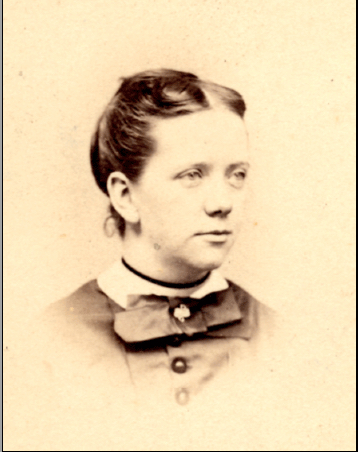- About MAA
- Membership
- MAA Publications
- Periodicals
- Blogs
- MAA Book Series
- MAA Press (an imprint of the AMS)
- MAA Notes
- MAA Reviews
- Mathematical Communication
- Information for Libraries
- Author Resources
- Advertise with MAA
- Meetings
- Competitions
- Programs
- Communities
- MAA Sections
- SIGMAA
- MAA Connect
- Students
- MAA Awards
- Awards Booklets
- Writing Awards
- Teaching Awards
- Service Awards
- Research Awards
- Lecture Awards
- Putnam Competition Individual and Team Winners
- D. E. Shaw Group AMC 8 Awards & Certificates
- Maryam Mirzakhani AMC 10 A Awards & Certificates
- Two Sigma AMC 10 B Awards & Certificates
- Jane Street AMC 12 A Awards & Certificates
- Akamai AMC 12 B Awards & Certificates
- High School Teachers
- News
You are here
Building a Book: HathiTrust, Ancestry.com, Serendipity, and Lifetime Interests – Christine Ladd-Franklin (1847–1930)
Writing my dissertation in the 1990s, a project largely concerned with American mathematics in the late 19th century, I had soon recognized that my home institution, Johns Hopkins University, had played a leading role. I absorbed many bits of information about the university that did not ultimately find a place in my dissertation. When I began seeking out distinctive mathematical individuals in 2015 for my book, some of this Hopkins knowledge came back into my consciousness. One intriguing instance was the career of Christine Ladd, later known as Christine Ladd-Franklin (1847–1930) after marriage to her classmate, Fabian Franklin. She had been the first female graduate student at Hopkins and had earned a mathematics PhD in 1882, which the university had not seen fit to award her until 1926.

Figure 18. Christine Ladd, ca 1870. Special Collections, Vassar College Libraries. Public domain.
Ladd-Franklin seemed like a nice subject for a vignette. As was now customary, I sought a snappy opening to begin the chapter, and I thought briefly that the Wikipedia entry on Ladd-Franklin had just what I needed in its account of how she had managed to gain entry to Johns Hopkins in the first place. The story told there was that she had sent in her application as “C. Ladd,” thereby fooling the university into accepting her without realizing that she was a woman. Very cute! Except that other accounts said no such thing. They described how Ladd had first written boldly to the chair of the mathematics department, J. J. Sylvester, alerting him to her impressive qualifications, following which he interceded forcefully with the administration; no subterfuge involved. Could these two accounts be reconciled?
I worked through the references provided by Wikipedia to find what appears to be the ultimate source behind the “C. Ladd” story, an article published in the summer of 1976 in the Association for Women in Mathematics Newsletter by Kathryn Jacob, then the archivist at Johns Hopkins [Jacob, 1976]. I then queried a friend of mine, Judy Green, a world expert on women in mathematics. Judy is the co-author of Pioneering Women in American Mathematics: The Pre-1940 PhD’s [Green and LaDuke, 2009], a book which recounts the Sylvester version of the Ladd narrative. I emailed Judy to ask why she had rejected the “C. Ladd” story. She sent me a copy of Ladd’s initial approach to Sylvester, a letter conspicuously signed “Christine Ladd.” And Judy furthermore noted that the “C. Ladd” story simply does not make sense. Jacob had written as follows: “The credentials accompanying the application indicated such outstanding ability that a fellowship in mathematics was awarded to the applicant, sight unseen, and was accepted.” But Ladd’s credentials would surely have prominently included her excellent record at Vassar College, well-known in the 19th century as being for women only.
Someday I must take the initiative to change the Wikipedia entry on Ladd-Franklin, if someone else doesn’t beat me to it.
Browsing online, I found much material by and about Ladd-Franklin, a small portion of which I harvested for use in my vignette. I was especially pleased to find the following lovely example of her biting feminist wit:
But this theory of Mr. Romanes is one which does not need confirmation by facts. It is one of those theories which the strong intuitive powers of his sex can perceive to be true at a glance, and to which the dicta of experience are absolutely immaterial [Ladd-Franklin 1896, 315].
David Lindsay Roberts (Prince George’s Community College), "Building a Book: HathiTrust, Ancestry.com, Serendipity, and Lifetime Interests – Christine Ladd-Franklin (1847–1930)," Convergence (January 2022)




